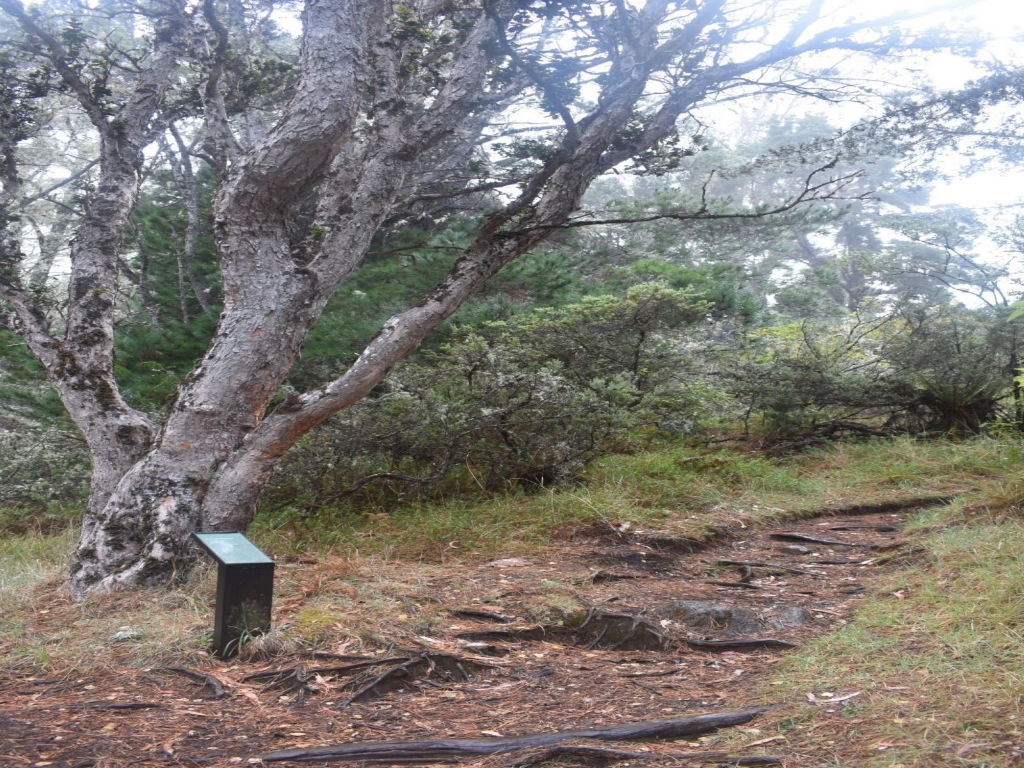
One of the native trees still thriving in this area, standing before you is called ʻōhiʻa lehua. It is the most common native endemic tree found in the state of Hawaiʻi, meaning it is found here and nowhere else in the world. The ʻōhiʻa is a pioneer species on new lava flows and has adapted to grow directly in lava rock. Its seeds blow in the wind and settle in cracks in the ground. Hawaiians utilize the hardy tree for building houses, canoes, spears, while the flowers are used in lei and sung about in chant and hula. Flowers are considered sacred to the goddess of lava and volcanic eruptions, Pele.
There are many versions of mo’olelo (story) about the ʻōhiʻa lehua tree. One version is of a couple who were madly in love- a man named ʻŌhiʻa, and a woman named Lehua. One day the volcano goddess Pele, taking the form of a beautiful woman, saw ʻŌhiʻa and was attracted to him. However ʻŌhiʻa refused Pele because he was in love with Lehua. Pele in her fit and fury, then turned ‘Ōhiʻa into a tree. Lehua, hearing of her lover being gone, asked the gods to turn her into a flower so she could be with him, which they did. To this day, if you pick the lehua blossom from the tree, it is said to rain because the two lovers have been separated.
The endemic ʻōhiʻa lehua creates the baseline for the Hawaiian word pilina (association, relationship) which highlights the vital interconnection of this landscape. Can you think of a native plant that grows in your neighborhood? What role does it play?
These trees are home to many native insects and even rare native tree snails! The ʻōhiʻa lehua flowers are an important food source for birds, they sip the nectar from the red blossoms and glean insects in bark and leaves.
Be still, wait, and look quietly at the crimson red flowers- you may get a chance to see a native Hawaiian honeycreeper. This tree reminds us there used to be a thriving native Hawaiian forest, and we need to protect this fragile ecosystem to ensure the survival of our equally rare and unique species of forest birds.
Is there something we missed for this itinerary?
Itineraries across USA


















































